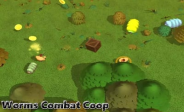Paper io
5
slither.io 3d
5
Snake & Ladder Board Game

Snake & Ladder Board Game
Gameplay Elements and Strategies of Snake & Ladder Board Game
Snake & Ladder, a timeless classic board game enjoyed by generations, blends luck with strategic decisions. Understanding its gameplay elements and effective strategies can enhance your chances of success and enjoyment.
Snake & Ladder is played on a numbered grid, typically with 100 squares, each representing a position. Players roll dice to advance their tokens, aiming to reach the final square first. The game's simplicity and unpredictability make it accessible yet engaging for players of all ages.
Gameplay Elements
Dice Rolling: The primary mechanic in Snake & Ladder involves rolling a dice to determine how many squares your token moves forward. The number rolled dictates your movement for each turn.
Snakes and Ladders: Certain squares on the board feature "snakes" and "ladders":
- Snakes: Landing on a square with a snake's head sends your token backward to its tail, setting back your progress.
- Ladders: Conversely, landing on a square with a ladder allows your token to ascend to a higher-numbered square, advancing your position.
Turn-Based Play: Players take turns rolling the dice and moving their tokens accordingly. The goal is to reach the last square (usually 100) before your opponents, navigating obstacles and leveraging opportunities presented by ladders.
Strategies and Tactics
Optimizing Dice Rolls: Since movement is determined by dice rolls, strategizing around the probabilities can be crucial. For instance, aiming to land on squares just before ladders or avoiding positions close to snake heads can minimize setbacks.
Positioning Relative to Ladders: Identifying and strategically positioning your token near ladders increases your chances of making significant advances when you roll the dice. Positioning yourself to potentially skip multiple rows can drastically shorten your path to victory.
Risk Management: Recognizing the placement of snakes and understanding the board layout helps in minimizing risks. Avoiding squares with snake heads, especially those close to your current position, can prevent setbacks and maintain progress.
Observe Opponent Moves: Paying attention to your opponents' movements can inform your strategy. Observing where they position their tokens and their approach to navigating the board can guide your decision-making process, allowing you to adjust your strategy accordingly.
Adaptability: Snake & Ladder is a game of adapting to changing circumstances. Being flexible with your strategy based on dice rolls and board developments is essential to maximizing your chances of winning.
Conclusion: Mastering Snake & Ladder
Snake & Ladder's combination of luck and strategic decisions provides a dynamic and enjoyable gaming experience. By understanding the gameplay elements—such as dice rolling, navigating snakes and ladders, and strategic positioning—players can enhance their gameplay and increase their likelihood of reaching the final square first.
Next time you gather around the board, remember these strategies to elevate your Snake & Ladder gameplay. Whether playing with family or friends, embracing these tactics can turn this classic game into a thrilling and strategic pursuit of victory.








































Discuss: Snake & Ladder Board Game